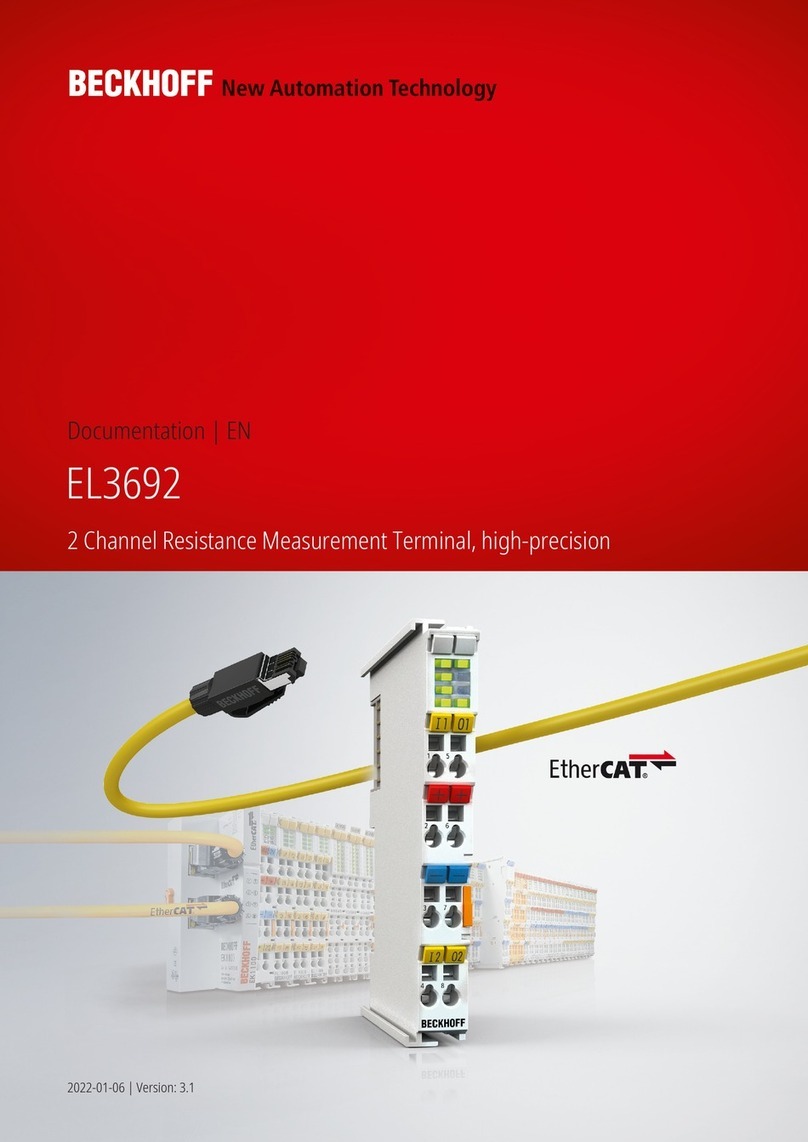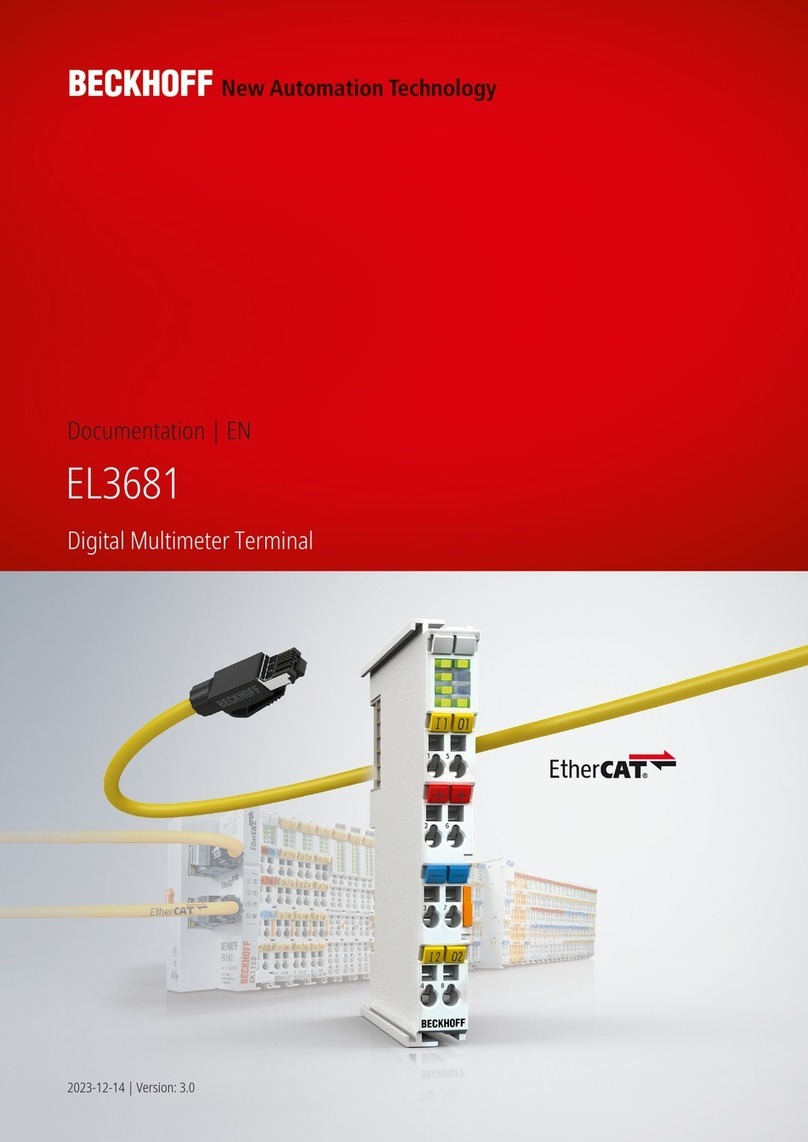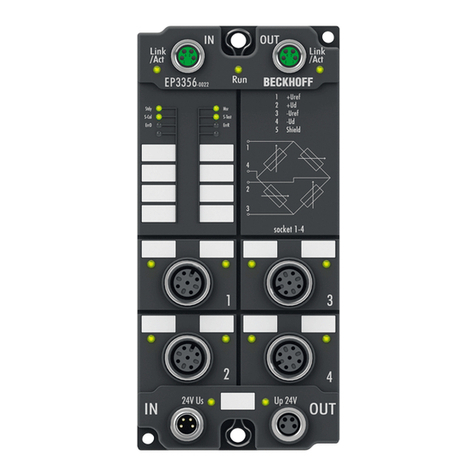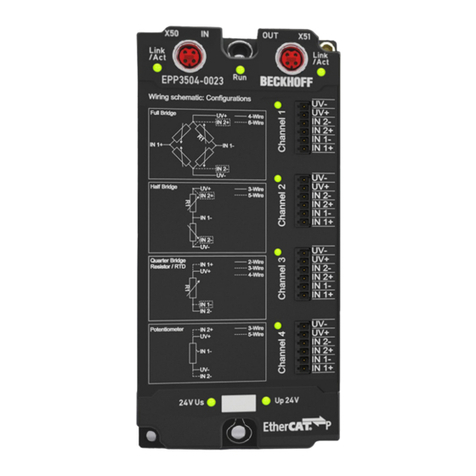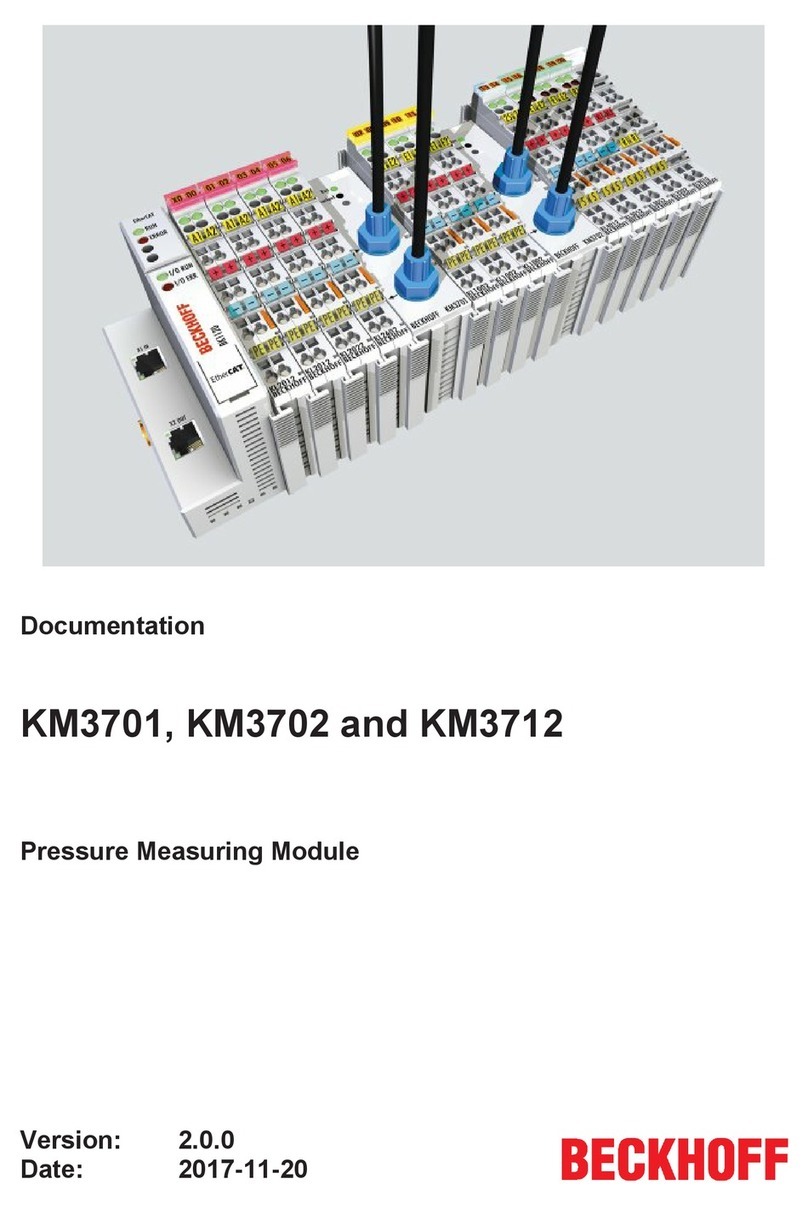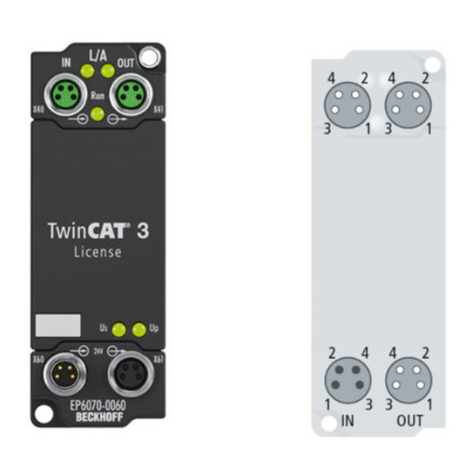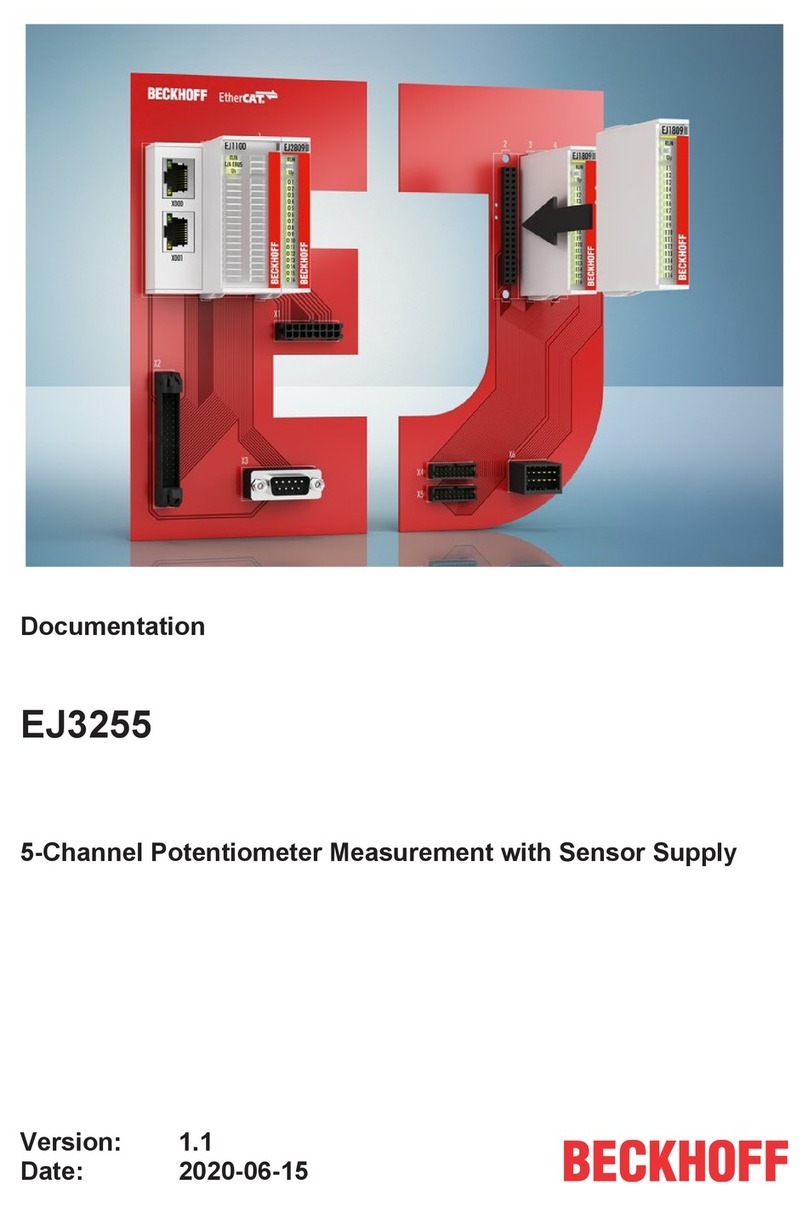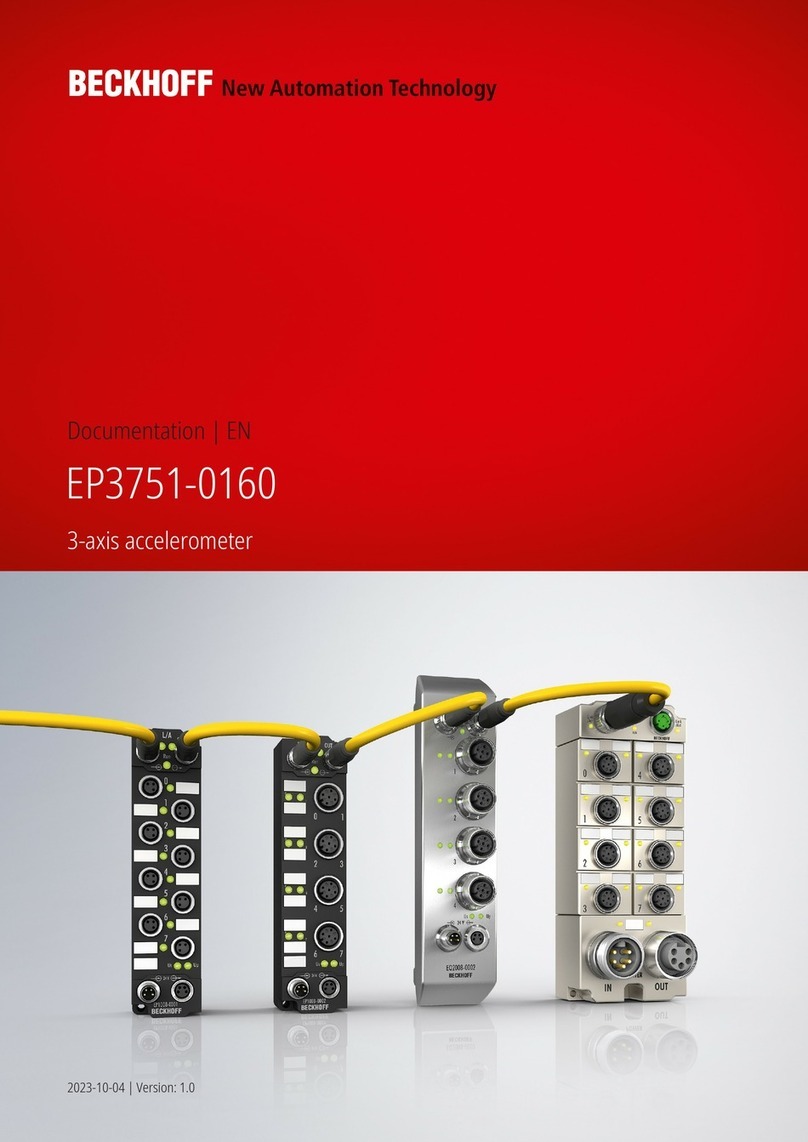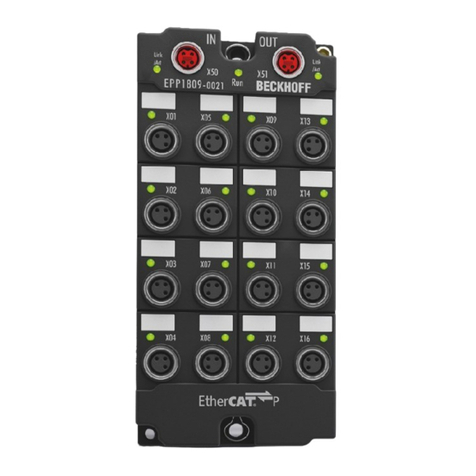
Table of contents
EP3752-0000 3Version: 1.4
Table of contents
1 Foreword....................................................................................................................................................5
1.1 Notes on the documentation .............................................................................................................5
1.2 Safety instructions.............................................................................................................................6
1.3 Documentation issue status ..............................................................................................................7
2 EtherCAT Box - Introduction....................................................................................................................8
3 Product overview ....................................................................................................................................10
3.1 Introduction .....................................................................................................................................10
3.2 Technical data.................................................................................................................................11
3.3 Process image ................................................................................................................................13
4 Mounting and cabling .............................................................................................................................14
4.1 Mounting .........................................................................................................................................14
4.1.1 Dimensions ......................................................................................................................14
4.1.2 Fixing................................................................................................................................ 15
4.1.3 Nut torque for connectors................................................................................................. 15
4.2 Supply voltages...............................................................................................................................16
4.2.1 Connectors....................................................................................................................... 17
4.2.2 Status LEDs ..................................................................................................................... 17
4.2.3 Conductor losses ............................................................................................................. 18
4.3 EtherCAT ........................................................................................................................................19
4.3.1 Connectors....................................................................................................................... 19
4.3.2 Status LEDs ..................................................................................................................... 20
4.3.3 Cables ..............................................................................................................................20
4.4 UL Requirements ............................................................................................................................21
4.5 Disposal ..........................................................................................................................................22
5 Commissioning/Configuration...............................................................................................................23
5.1 Integrating into a TwinCAT project..................................................................................................23
5.2 Acceleration sensors.......................................................................................................................24
5.2.1 Settings ............................................................................................................................25
5.2.2 Inclination measurement .................................................................................................. 29
5.3 Restore the delivery state ...............................................................................................................31
5.4 Decommissioning............................................................................................................................32
6 CoE parameters.......................................................................................................................................33
6.1 Object overview...............................................................................................................................33
6.2 Object description and parameterization.........................................................................................37
7 Appendix..................................................................................................................................................48
7.1 General operating conditions ..........................................................................................................48
7.2 Accessories.....................................................................................................................................49
7.3 Version identification of EtherCAT devices .....................................................................................50
7.3.1 General notes on marking................................................................................................ 50
7.3.2 Version identification of EP/EPI/EPP/ER/ERI boxes........................................................ 51
7.3.3 Beckhoff Identification Code (BIC) ................................................................................... 52
7.3.4 Electronic access to the BIC (eBIC)................................................................................. 54
7.4 Support and Service........................................................................................................................56
